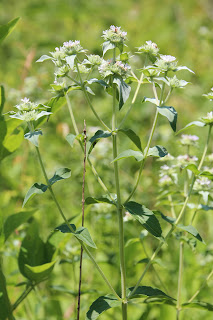Kali and I have been out of town for nearly three weeks, and I haven't had a chance to post during that time. Over the next few weeks, I'll prepare a series of posts about our visits to special natural areas, though Kali and I were also traveling for business, to address family matters, and to investigate potential retirement locations.
Our first stop was San Diego, California, where we visited my father (who is in hospice care with congenital heart failure), Kali's mom (who moved from my brother-in-law's house to assisted care just three days before we arrived), and where Kali attended a professional conference. On one of Kali's conference days, my brother-in-law, Patrick, and I hiked the Iron Mountain Trail in central San Diego County, ascending about 1,000 feet over a distance of about 1.5 miles. The Iron Mountain Trail is very popular, and we were joined by many other hikers along the way even on a weekday.
At the Iron Mountain trailhead
Wildflowers on the gentle lower slope
This image, looking westward toward the Pacific Ocean (which is not visible through the haze in the background), was taken about one-third of the way to the summit. Patrick and I had just climbed up through the canyon on the right side of the image. The canyon contains the remnants of small exploratory excavations for very low assay iron ore, hence the mountain's name. Though it was only about 11 a.m., we were already very hot, sweaty, and breathless by the time we reached this point.
Patrick under "attack" by a large weevil
Split rock with flowers
Wildflowers were blooming profusely all along the route. However, since I only visit San Diego, on average, less than once per year, I haven't yet invested in a wildflower guide to the chaparral and oak scrub habitats of southern California. We'll just have to enjoy the images of the flowers unidentified.
Nearing the rocky summit
Resting at the summit, with a view to the south
The view (westward) from the summit, with a crow preparing for a landing
Location of Iron Mountain (about 25 miles northeast of central San Diego)










































